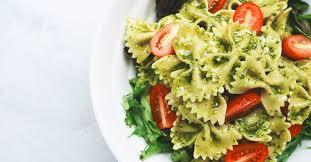The gluten-free pasta market is experiencing a substantial boom, thanks to ongoing innovations in taste and texture profiles. No longer perceived as a dietary compromise, gluten-free pasta is now evolving into a mainstream culinary choice. These advancements are being driven by research in ingredient formulation, food technology, and growing consumer demand for high-quality, allergen-free alternatives that mirror traditional wheat-based pasta.
Transitioning from Compromise to Culinary Delight
Historically, gluten-free pasta was associated with bland flavors, gritty textures, and poor structural integrity. Consumers often faced breakage during cooking, mushiness, or unpleasant mouthfeel. Today, the narrative has shifted. Manufacturers are investing in food science to replicate the authentic bite, elasticity, and flavor of traditional pasta, thus expanding their appeal beyond those with celiac disease or gluten sensitivity.
A key factor in this transformation is the diversification of base ingredients. Chickpeas, lentils, brown rice, quinoa, and even green peas are now being used to create pasta with enhanced taste, nutrition, and structural consistency. These ingredients not only improve the sensory experience but also add fiber, protein, and micronutrients, boosting the health quotient.
Ingredient Blending and Functional Formulations
Blending multiple gluten-free flours is a rising trend that helps overcome the limitations of using a single ingredient. For example, combining rice flour with tapioca starch and xanthan gum can achieve a more elastic and cohesive dough. Innovations in hydrocolloids and gums further aid water retention, preventing dry or brittle textures after cooking.
Some premium brands are incorporating vegetable purées, such as spinach, beetroot, or carrot, not only for aesthetic color but also for subtle flavor enhancements. Additionally, ancient grains like sorghum, millet, and amaranth are gaining traction due to their nutritional density and ability to mimic the al dente quality of wheat pasta.
These functional blends allow brands to market their products as superior not just in taste but also in health benefits, appealing to broader demographic segments including athletes, vegans, and wellness-oriented consumers.
Texture Optimization Through Processing Technology
Beyond ingredients, technological advances in processing have played a significant role in elevating gluten-free pasta. The development of specialized extrusion techniques allows for better hydration, shaping, and drying, preserving the desired structure and reducing cooking loss. Precision drying cycles maintain the integrity of the pasta, preventing it from becoming brittle or overly chewy.
Cold extrusion is increasingly favored for its ability to process high-protein flours like lentil and chickpea without compromising mouthfeel. Moreover, innovations in steaming and slow drying help preserve nutrients and achieve uniform cooking, contributing to a restaurant-quality pasta experience at home.
Food manufacturers are also exploring enzyme treatments to improve dough elasticity and reduce cooking time, a common issue in earlier gluten-free formulations. These technologies bridge the sensory gap between gluten-containing and gluten-free products, opening up opportunities in both home cooking and foodservice sectors.
Consumer Feedback Loop and Continuous Improvement
The gluten-free pasta market has embraced a consumer-centric development model, where feedback from online platforms, product reviews, and focus groups is directly informing R&D. This real-time feedback loop allows brands to quickly iterate on recipes, tweak seasoning levels, or modify textural attributes to better meet consumer expectations.
The accessibility of digital tools has allowed even small-scale producers to run taste-testing campaigns or A/B tests through direct-to-consumer channels. Many brands are launching limited batches to gauge reactions before full-scale production, minimizing waste while ensuring product-market fit.
As a result, consumers now have access to a wide variety of gluten-free pasta options tailored to specific preferences—be it firmness, thickness, or richness of taste—far beyond the traditional spaghetti or penne.
Gourmet and Culinary Adaptations
High-end food brands and artisanal pasta makers are entering the gluten-free space with gourmet offerings that focus heavily on flavor sophistication and cultural authenticity. From truffle-infused gluten-free fettuccine to hand-rolled tagliatelle using heirloom grain flours, the market is witnessing an intersection of health and haute cuisine.
Restaurants, too, are embracing these innovations. Gluten-free pasta is no longer relegated to a single menu item but is being integrated across dishes with diverse sauces, toppings, and cultural influences. The ability of newer formulations to hold sauce and maintain texture under heat makes them suitable for professional kitchens and catering.
This culinary credibility not only builds consumer confidence but also pushes innovation further, as chefs demand pasta that performs as well as conventional wheat versions in complex dishes.
Marketing Innovation: Emphasizing Experience Over Restrictions
Modern gluten-free pasta marketing highlights indulgence, flavor exploration, and creativity—shedding the past image of dietary restriction. Brands are showcasing visually rich recipes, collaborating with food influencers, and emphasizing the gastronomic possibilities of their products.
Rather than framing gluten-free pasta as a compromise, the narrative is shifting toward superior taste and wellness. Packaging often highlights the artisanal quality, clean ingredients, and sustainability of sourcing—resonating with conscious consumers who value transparency and authenticity.
Future Outlook: Tech-Enabled Personalization and Premium Segments
As demand continues to grow, the gluten-free pasta market is expected to move toward increased personalization. Smart kitchen apps may soon suggest pasta types based on dietary goals, while AI-driven platforms could match consumers with pasta that fits their taste profile or cooking style.
Premium and niche segments are also expected to rise. This includes fortified gluten-free pasta with added omega-3s or probiotics, seasonal or regional specialty shapes, and even ready-to-eat gluten-free pasta kits for busy households. Such diversification, backed by consistent innovation, will ensure that gluten-free pasta remains both relevant and desirable in the broader food landscape.
In summary, the gluten-free pasta market is undergoing a taste and texture revolution, transforming how consumers perceive and experience gluten-free eating. Through ingredient innovation, advanced food science, and culinary creativity, brands are meeting—and often exceeding—consumer expectations.



